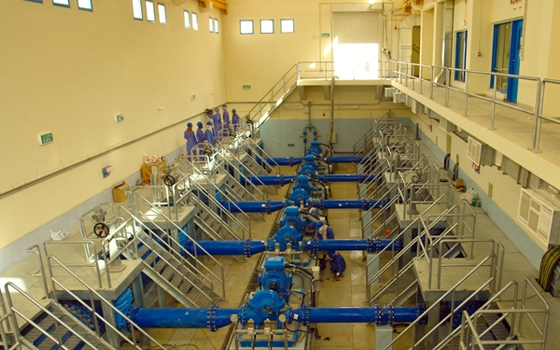As one of the world’s largest consumers of water and electricity on a per capita basis, Qatar is looking to reduce its utilities usage. However, with the demand for water likely to outstrip supply in the near future, the government is also taking steps to boost capacity.
Less is more
In a statement issued on September 6, state utilities distributor Qatar General Electricity and Water Corporation (Kahramaa) said efforts to lower power consumption were beginning to show results, with per capita usage down by 10.5% for the first half of 2013 compared to the same period last year.
Kahramaa has been promoting conservation of resources, targeting a 20% and 35% reduction in electricity and water usage, respectively, by 2018. The state utility’s efforts include building awareness of good practices and encouraging the use of energy efficient technology.
Planning for the future
Qatar is supplied by five utilities facilities: three independent water and power projects (IWPPs), one independent power project and one power plant owned by Qatar Electricity and Water Company (QEWC), a public shareholding company in which the state holds a 43% share. QEWC is also part-owner of the IWPPs and IPP.
According to Faisal Obaid Al Siddiqi, the CEO of Ras Girtas, the IWPP model has worked well in Qatar and is one of the best examples of the government’s partnering with foreign investors. “Typically electricity and water utilities are either publicly or privately owned, both of which can be problematic. By working with the private sector, Qatar has been able to increase plant efficiency and lower costs,” he told OBG. Ras Girtas, which has been in operation since 2009, is the largest IWPP in the country.
Electricity generation capacity stands at 8756 MW, while 325m gallons per day (gpd) of water can be produced. This is more than enough electricity to meet the needs of Qatar, where peak demand averages around 6000 MW. However, according to industry participants, water usage looks set to exceed supply next year.
Several projects that would boost water supply are in the works. The Ras Abu Fontas A2 desalination plant, which is being built by Mitsubishi and Toyo Thai Corp, is scheduled to be completed by June 2015 and will be able to produce 36m gpd. The so-called Facility D, an IWPP to be located between Wakrah and Mesaieed, is expected to be tendered by 2015 and will have a generation capacity of 2000 MW and 60m gpd. A desalination plant is being considered for Ras Laffan, with a proposed capacity of 90m gpd, although this facility would generate water for industrial use only. Pre-qualifications have been awarded for both the Ras Laffan water project and the Facility D IWPP.
Looking abroad
Market participants are also looking to expand overseas, to take advantage of rising demand for utilities internationally and to earn returns on Qatar’s substantial hydrocarbons profits. In May, QEWC, Qatar Petroleum International (QPI) and Qatar Holding signed an agreement to establish Nebras Power, with an eye toward investing in water and electricity IPP projects abroad. The entity, which will be 60% held by QEWC, with 20% shares each owned by QPI and Qatar Holding, will focus primarily on opportunities in the Middle East, Asia and North Africa.
“The strategy behind the formation of Nebras is to have a singular Qatari front to deal with global power and water investments, with full alignment of its stakeholders,” Nasser Al Jaidah, the CEO of QPI, told OBG. While QPI announced in July that it was separately investing in a Greek utility, purchasing a 25% stake in Greece’s Heron II power plant, Al Jaidah told OBG that this acquisition process had been under way for more than a year before the Nebras agreement was signed, adding that QPI may divest its stake in the Greek facility to Nebras in the future.
Oxford Business Group
18 October
























































